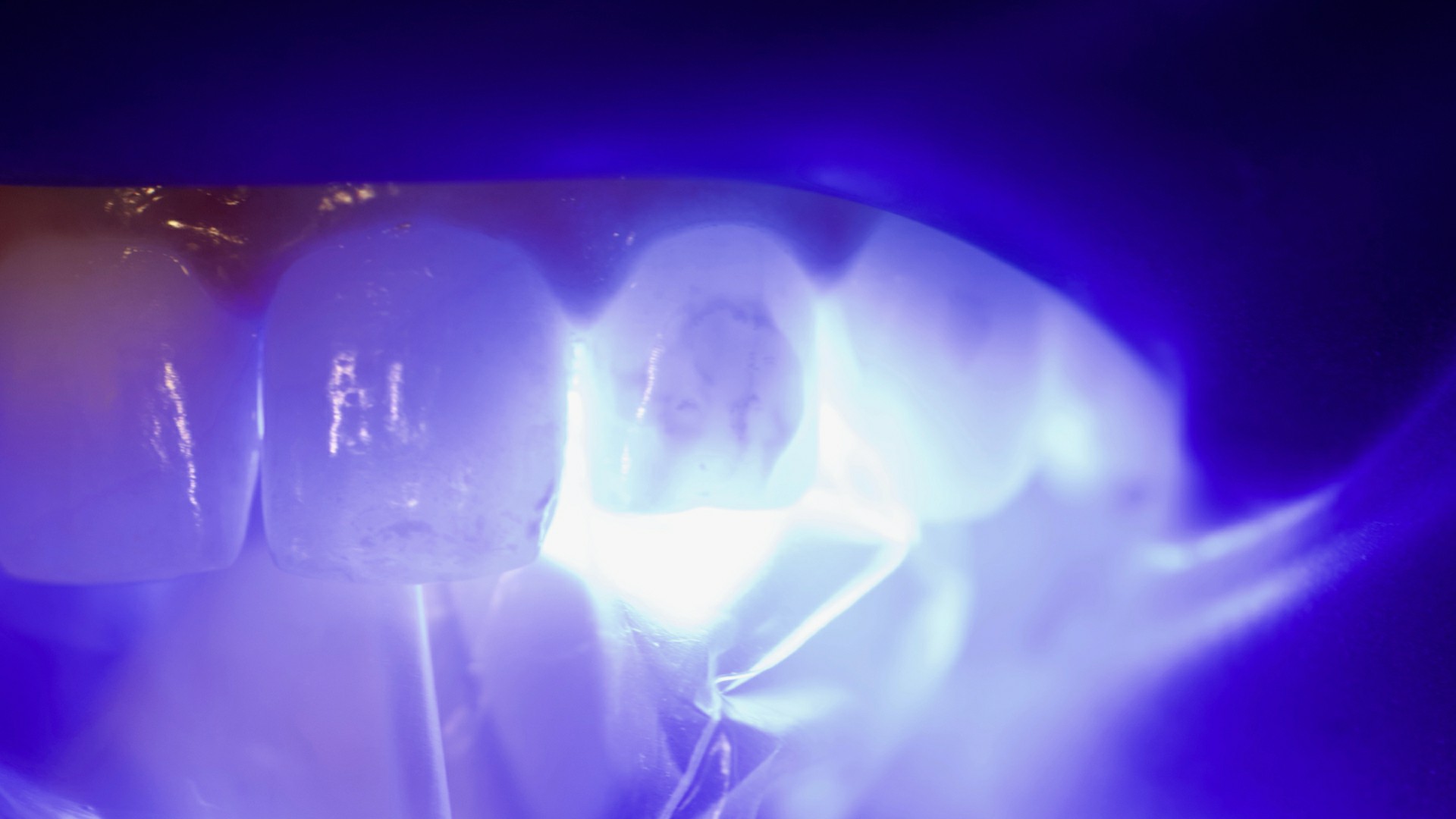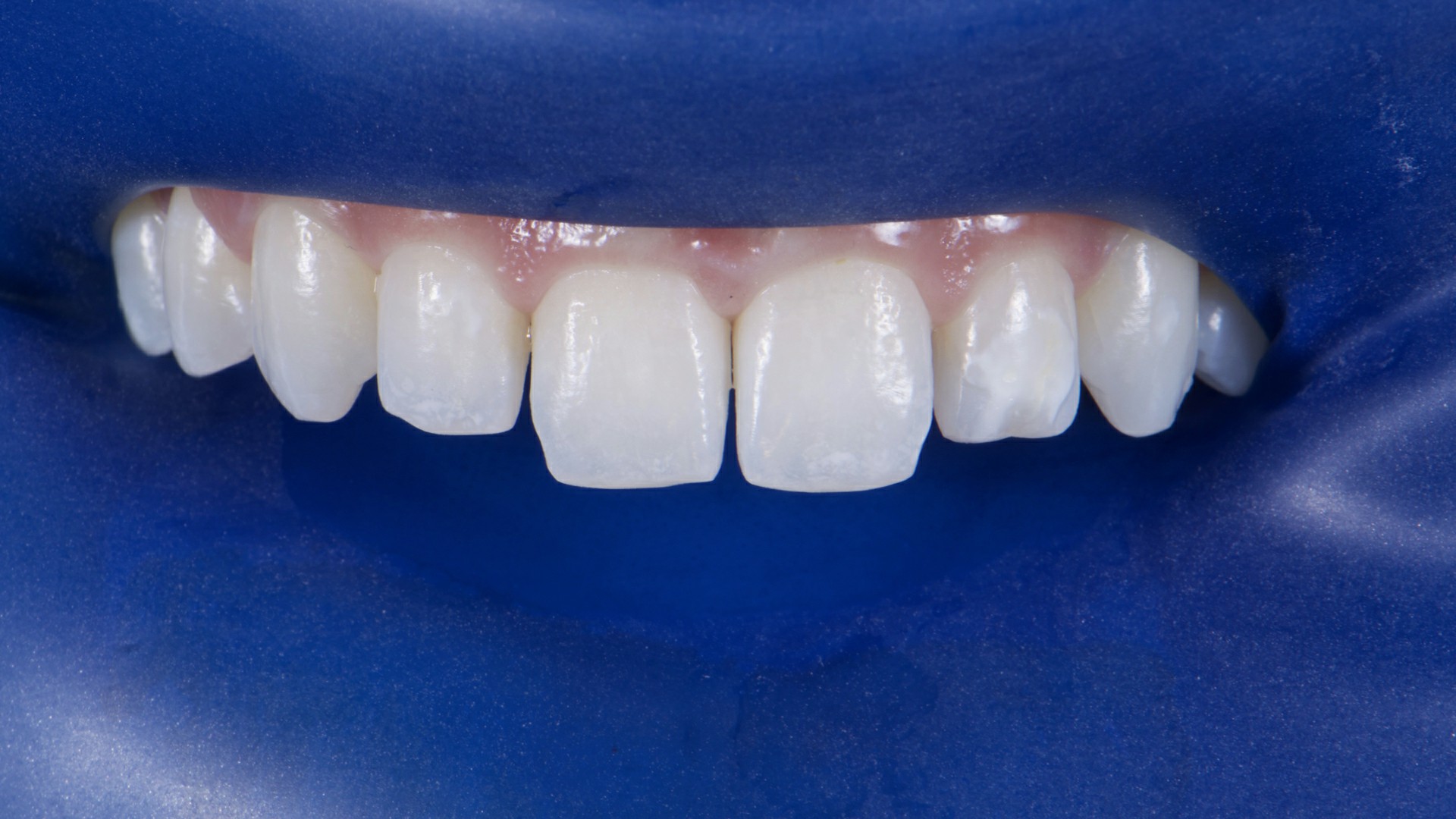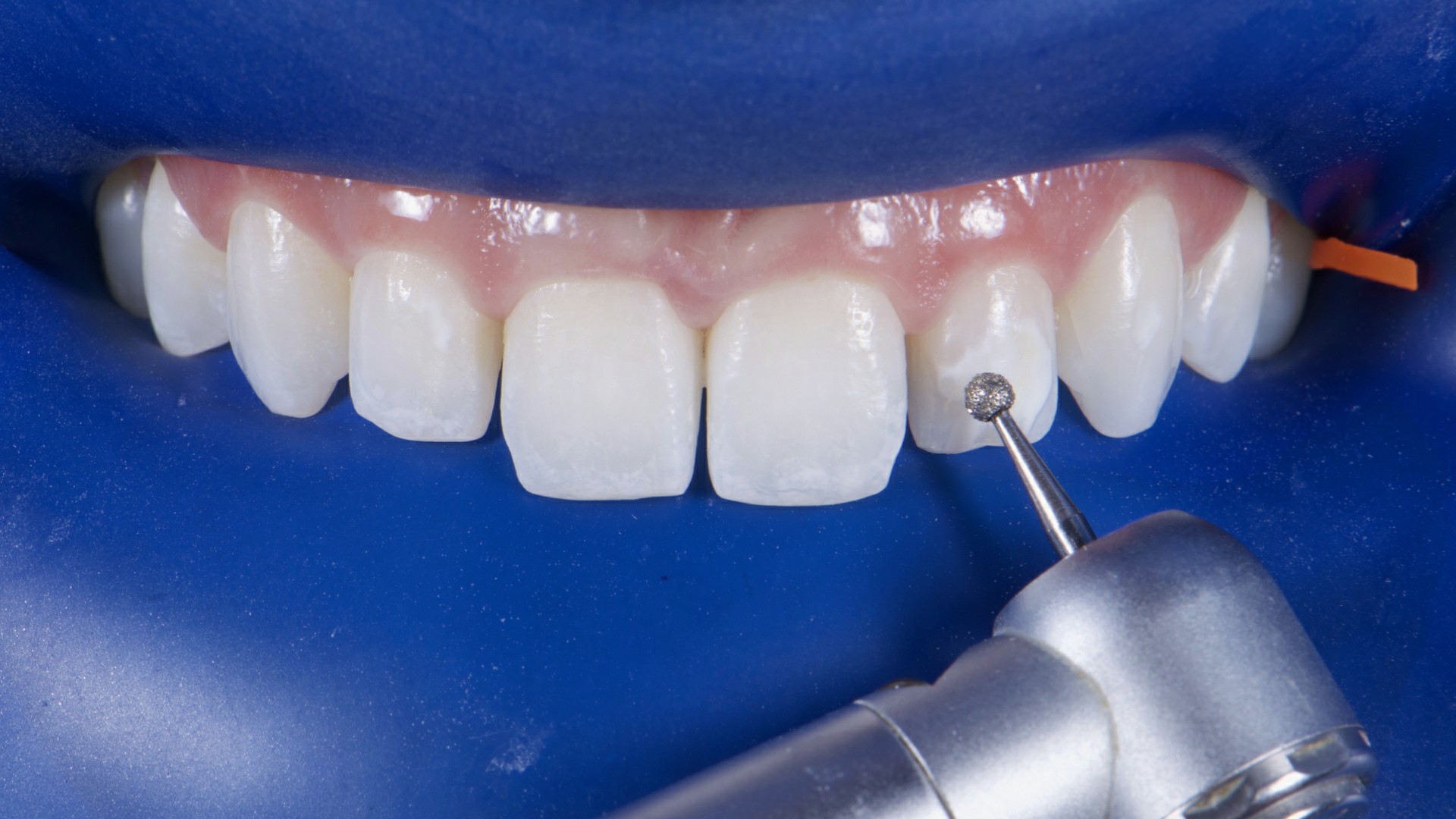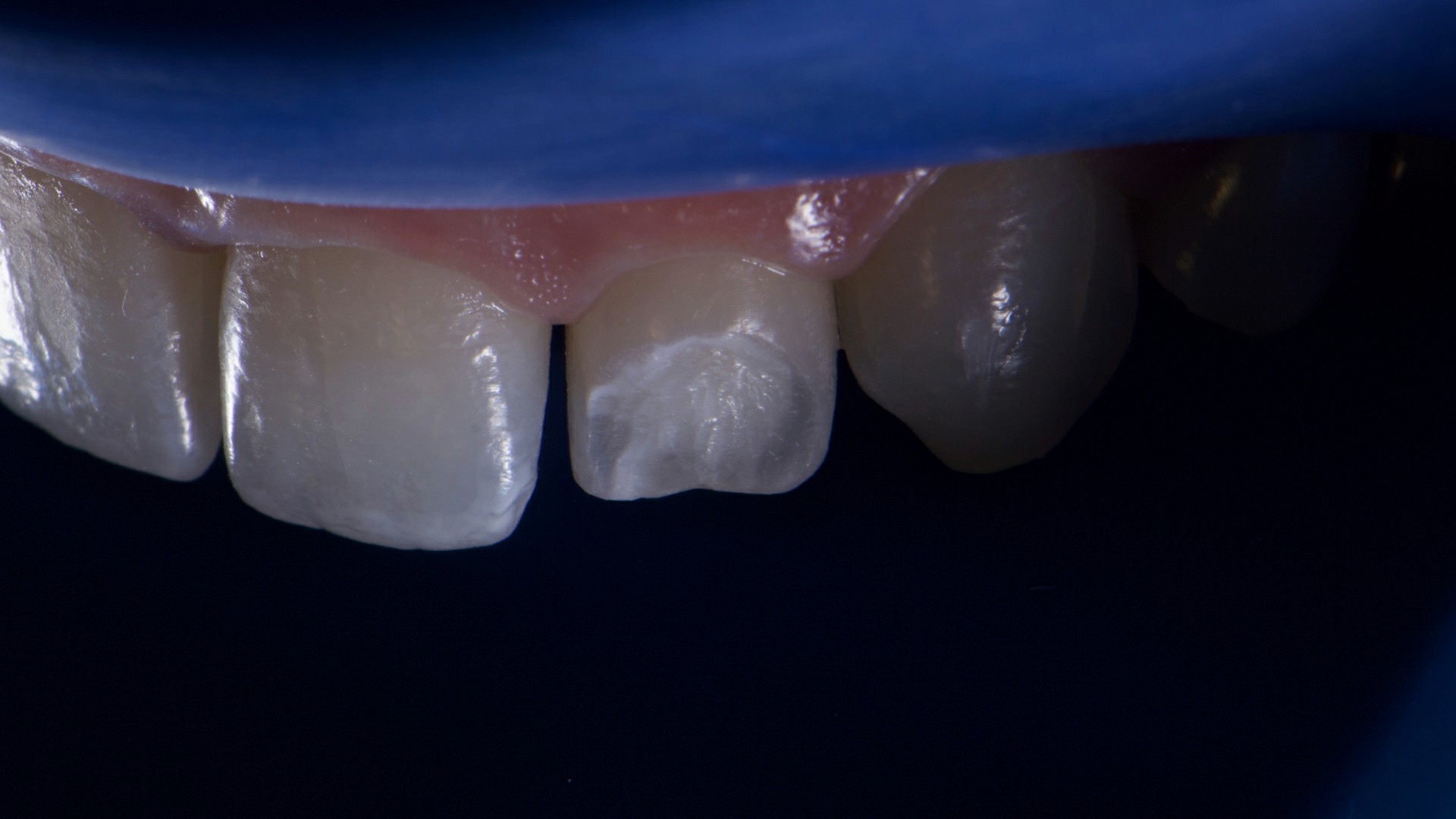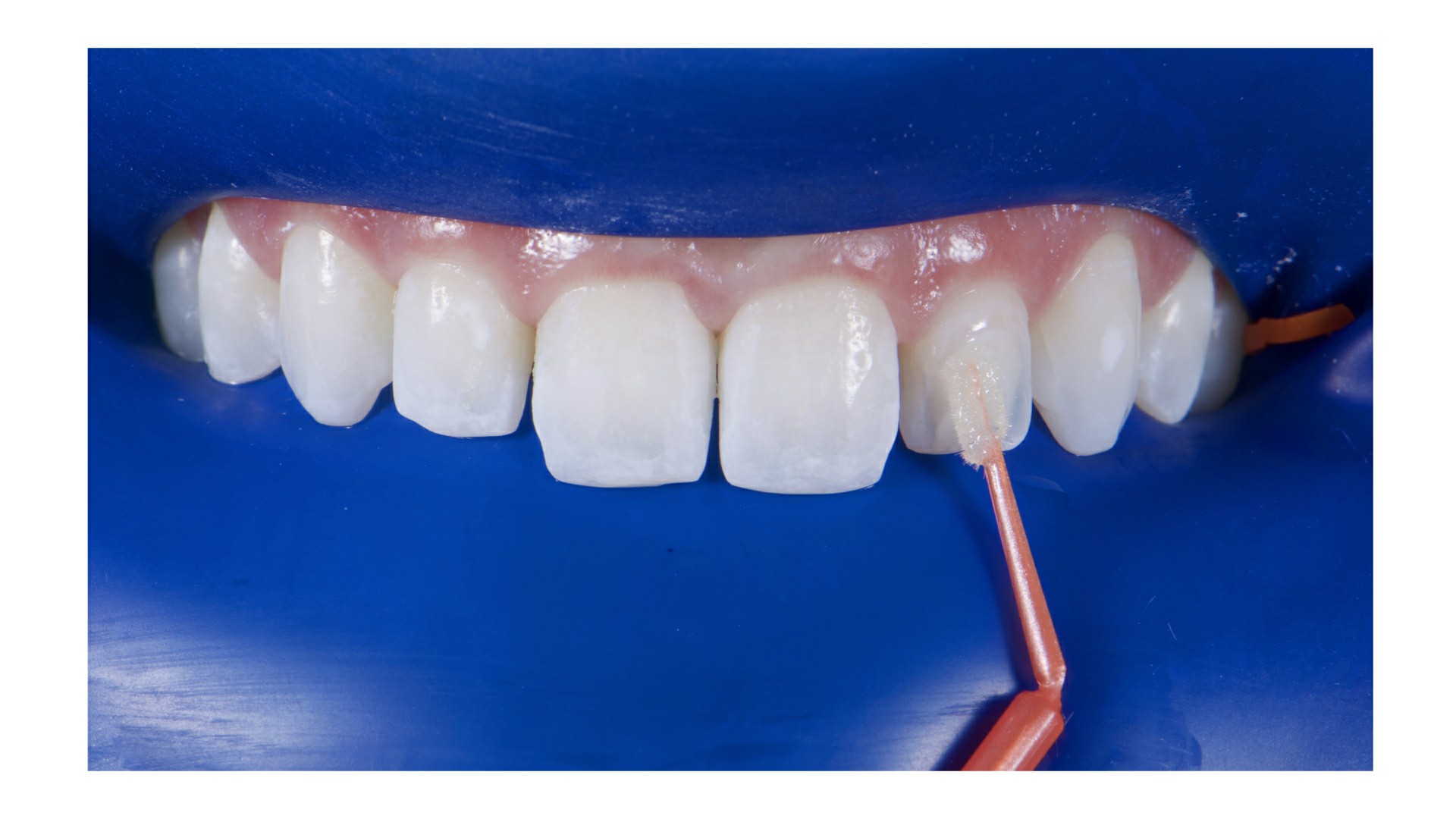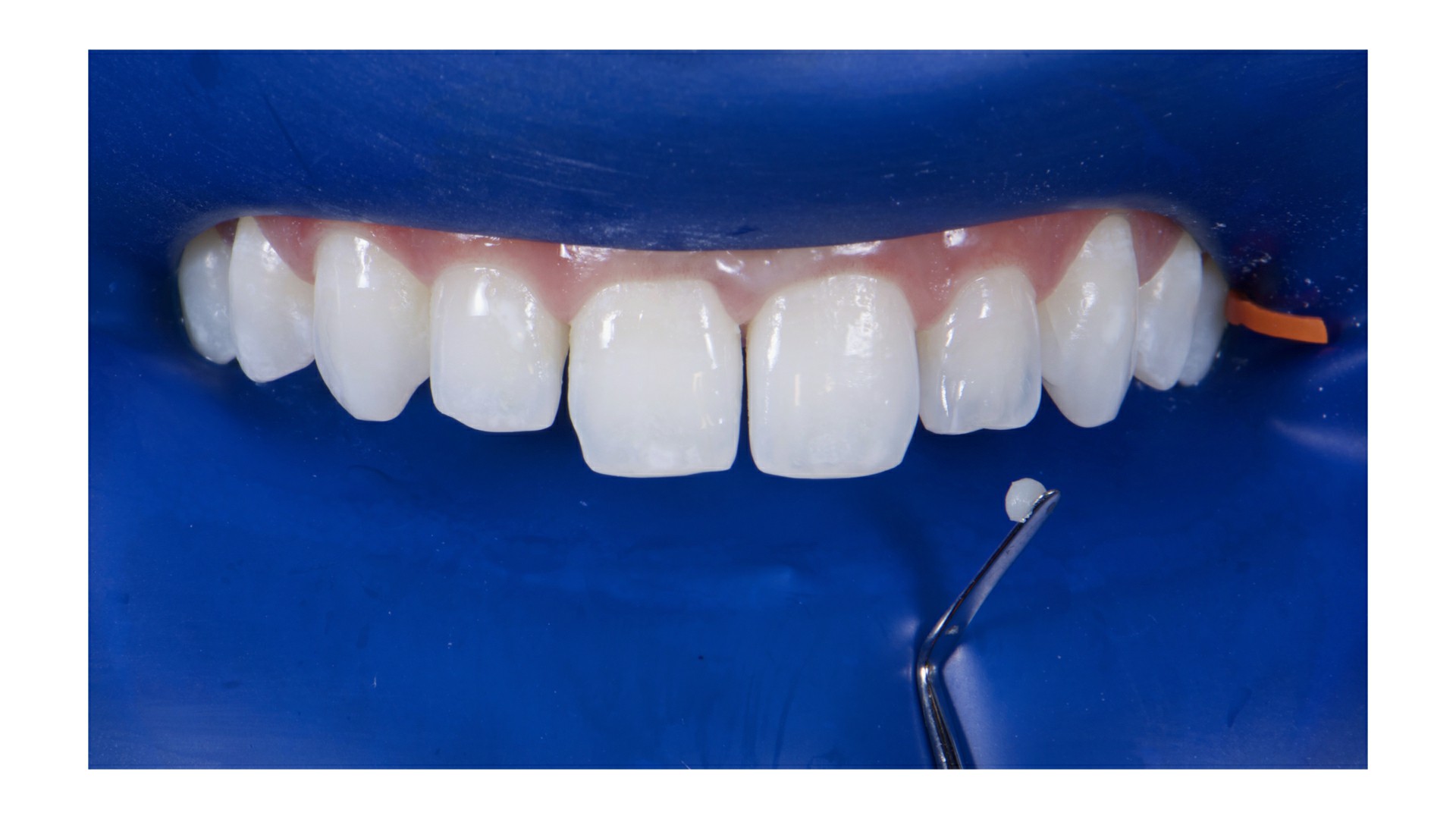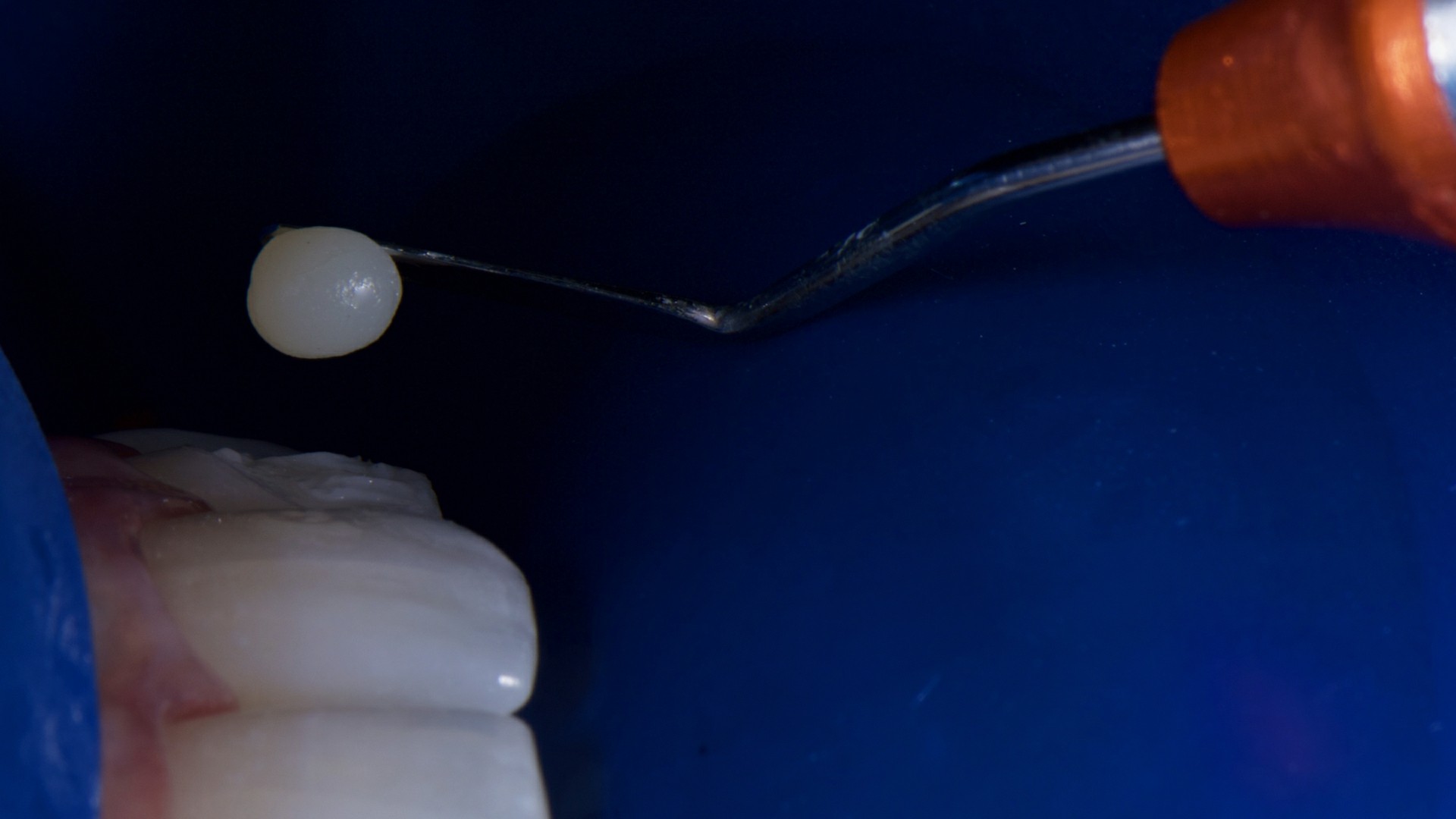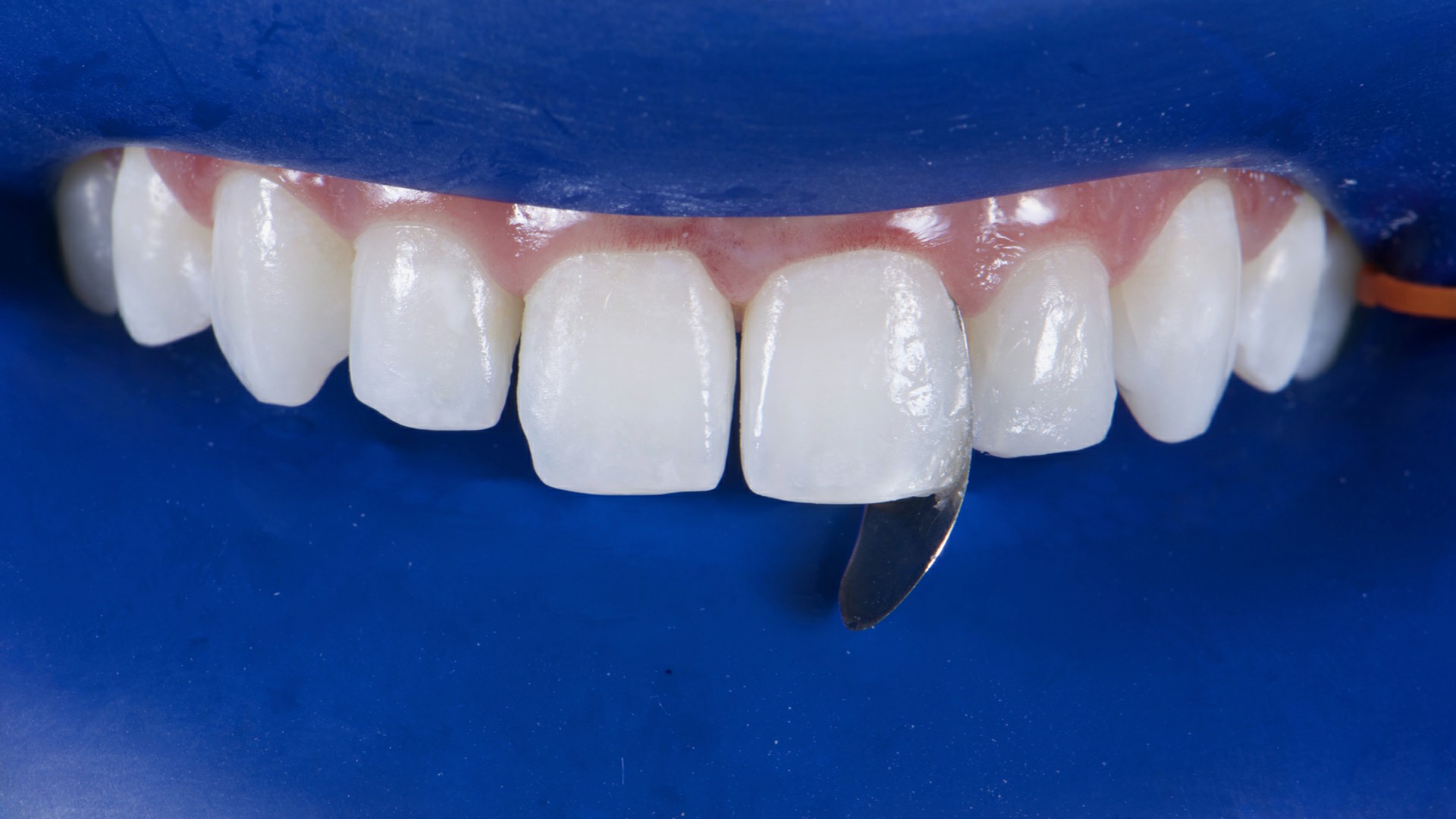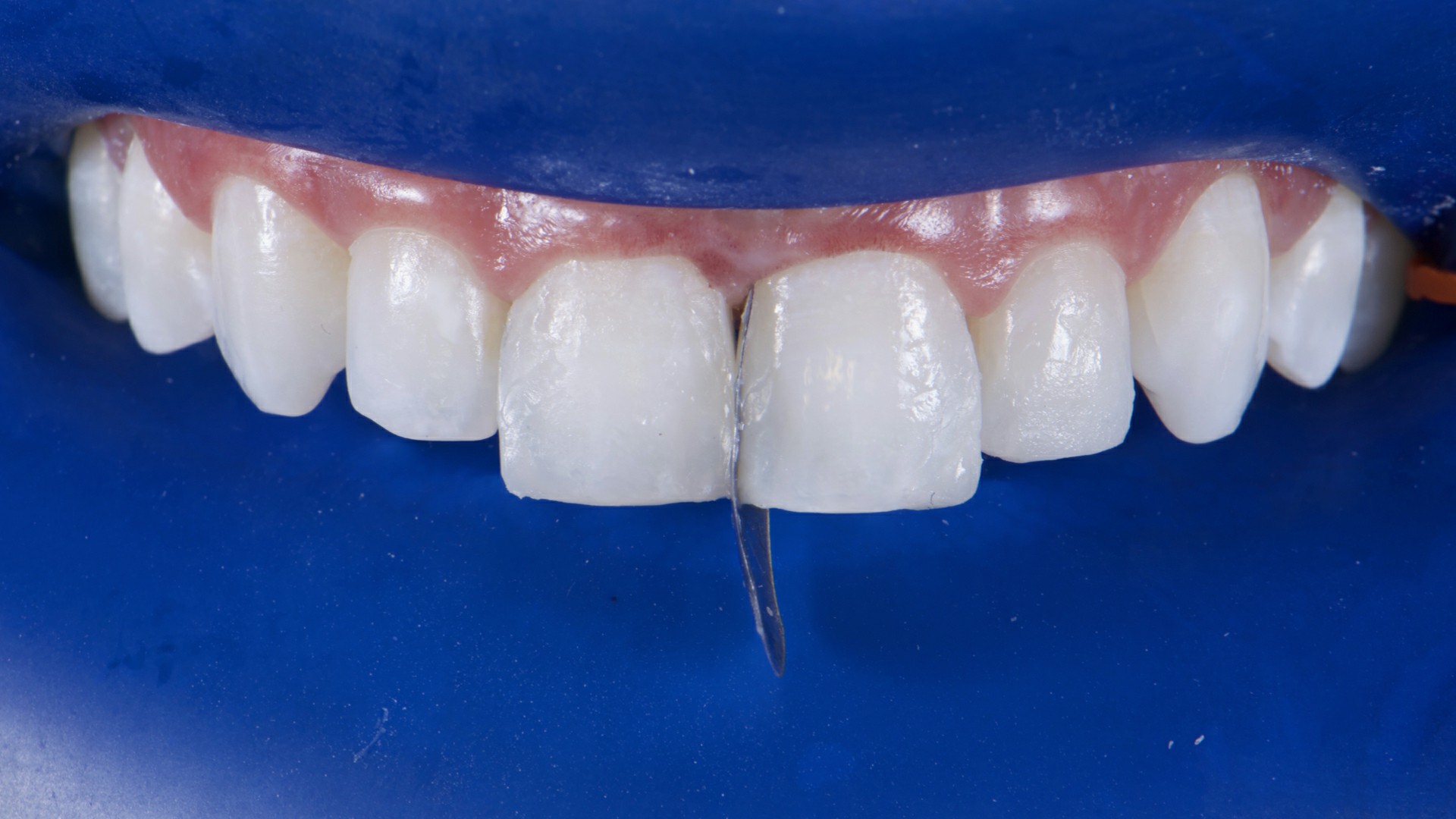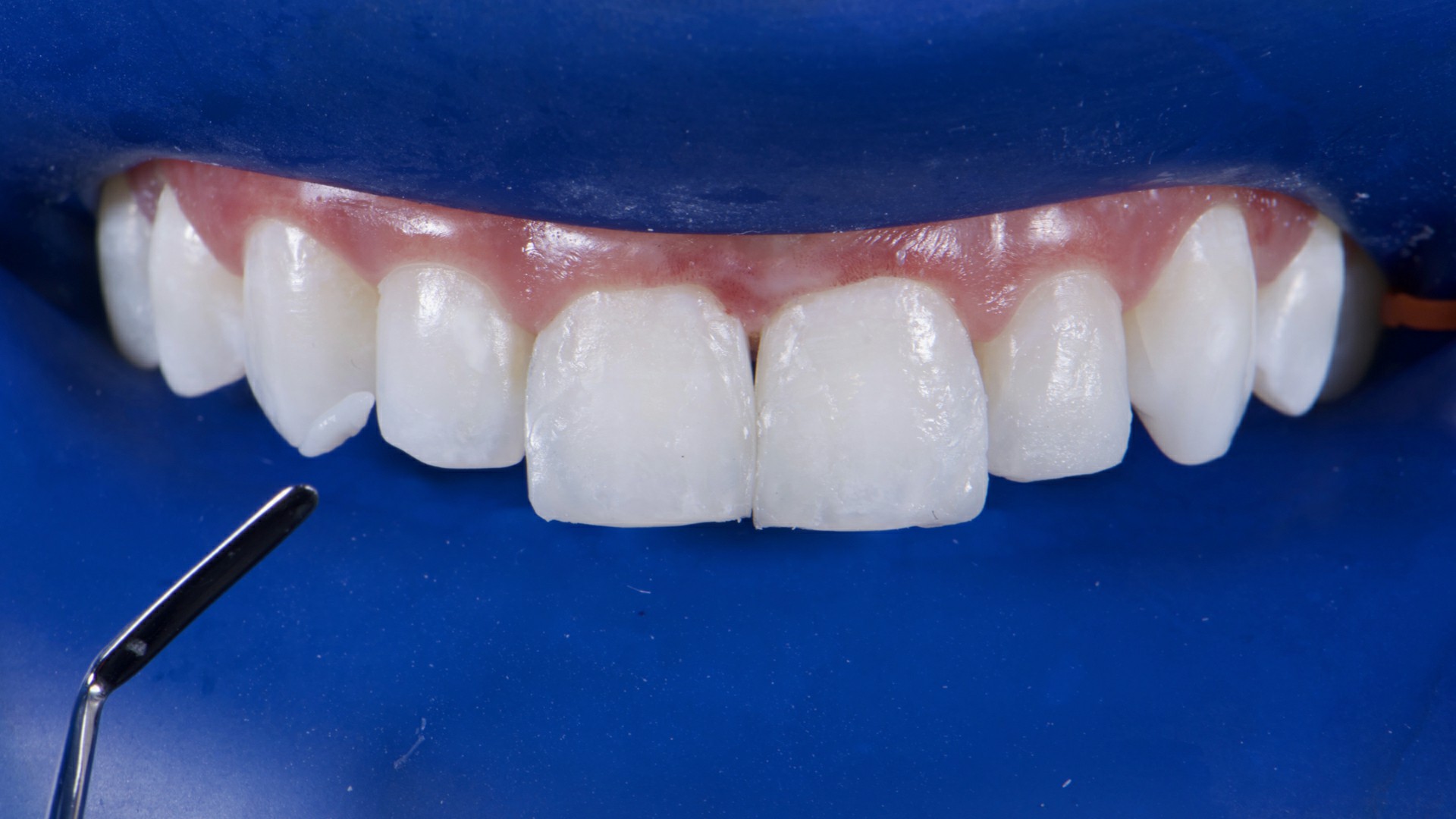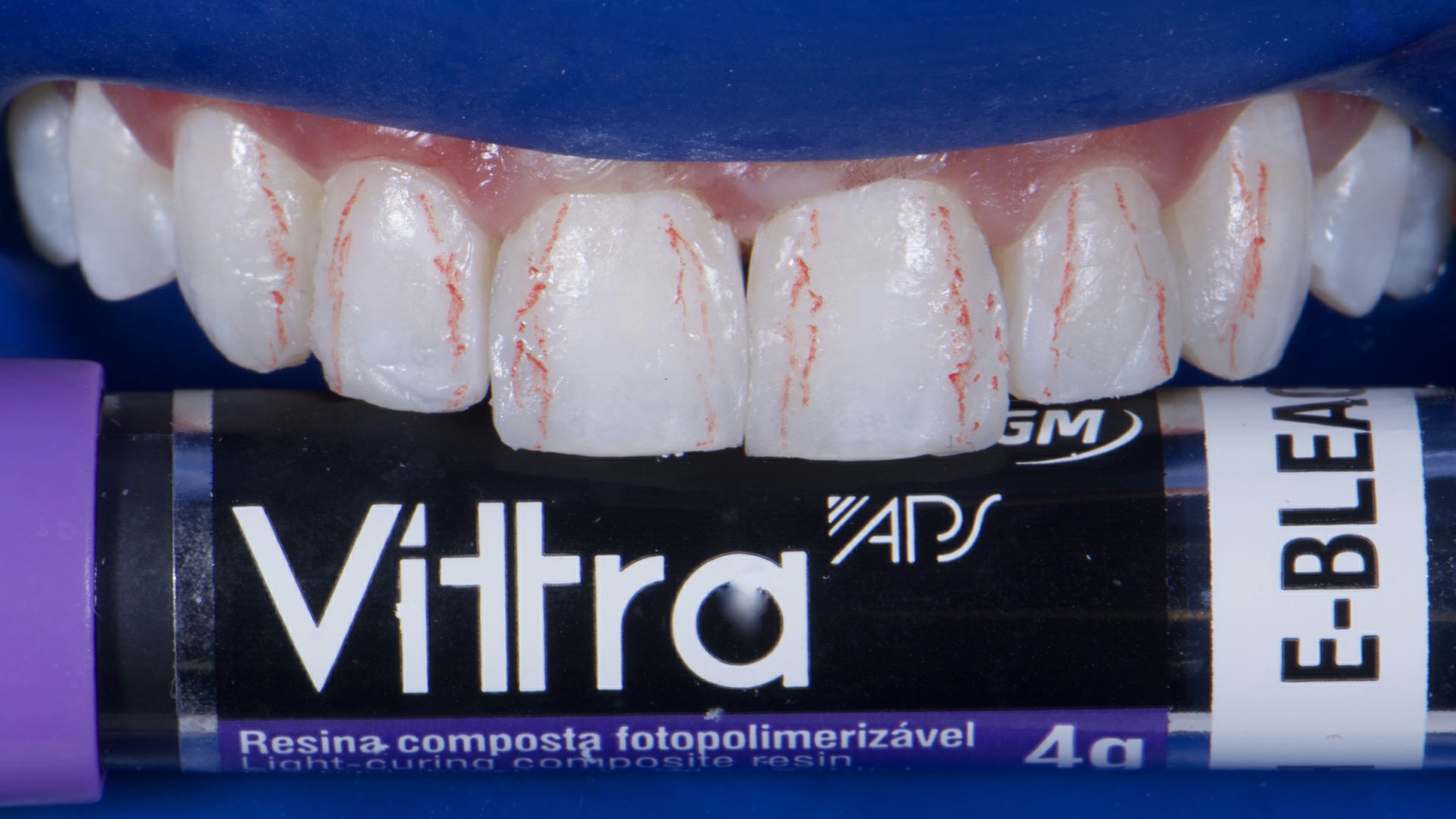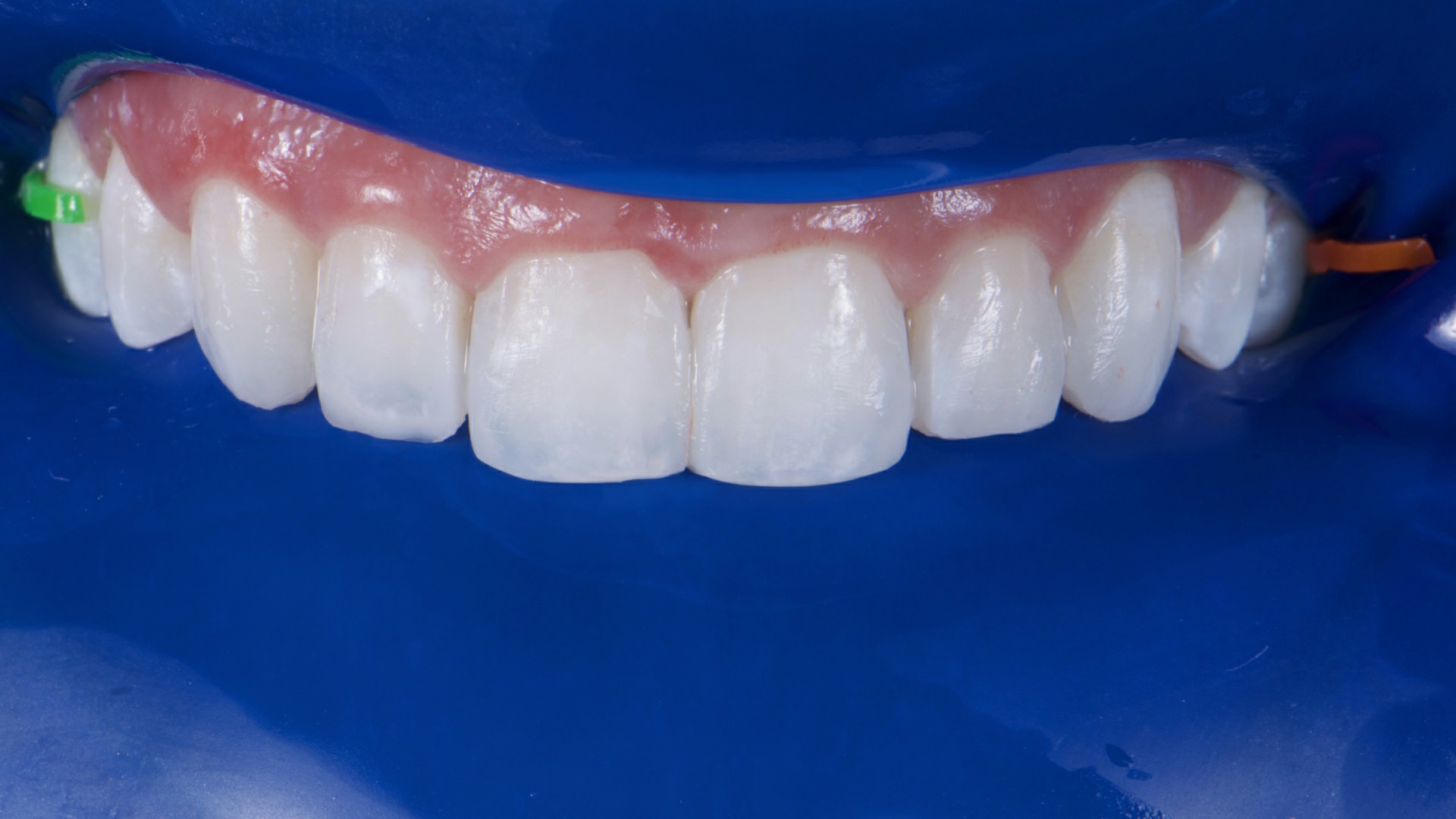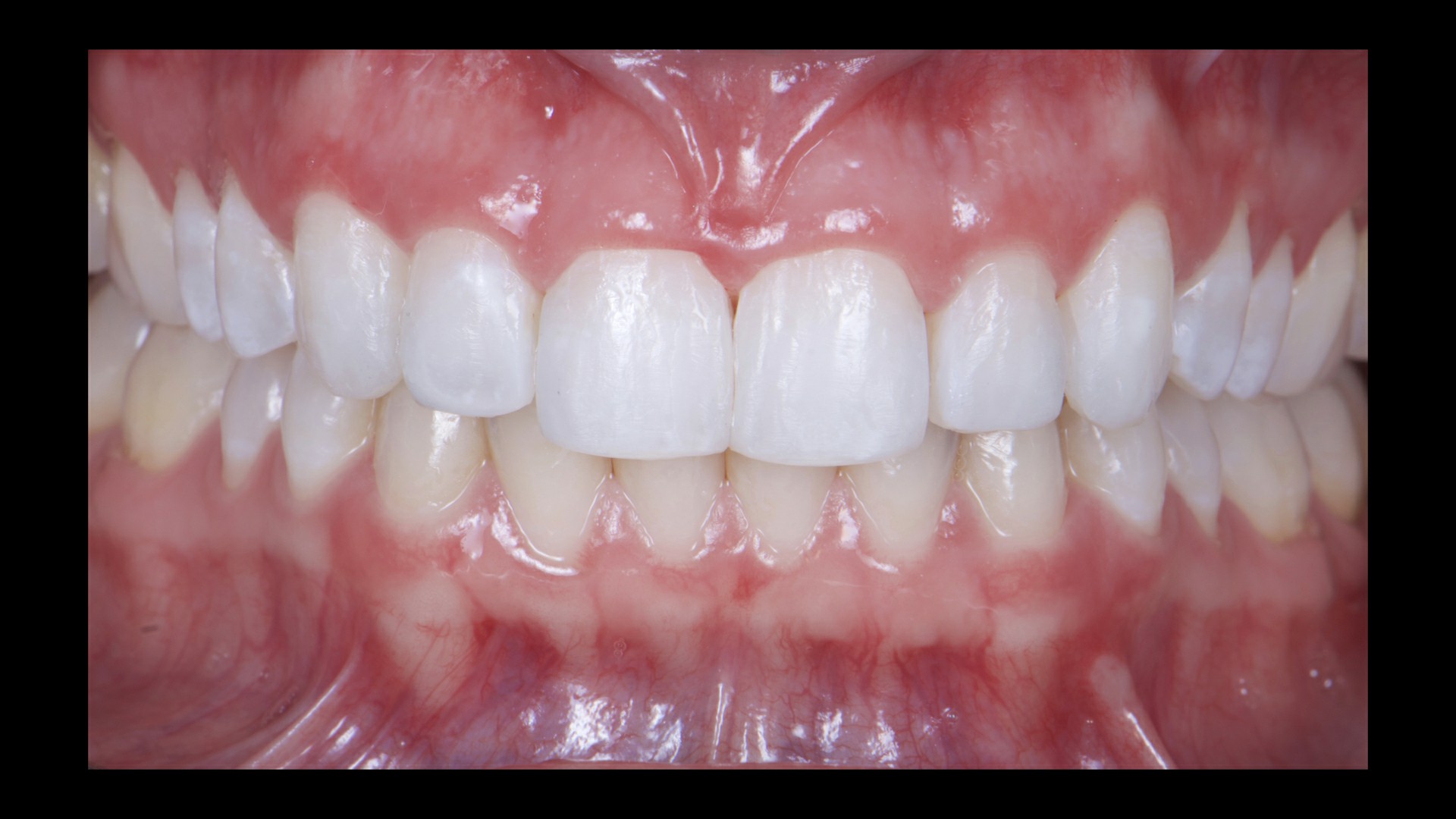Authors: Gregori Franco Boeira; Giulia Tarquino Demarco; Lisia Lorea Valente
Patient: 21-year-old female patient (G.T.D.)
Main complaint: “Aesthetic dissatisfaction with the hypoplasia stains and changed contours which contributed to a childish smile.”
Initial clinical/radiographic evaluation
After anamnesis, detailed clinical and radiographic evaluations, complemented with the transillumination of the element 22, it was noted that the patient had hypoplasia stans and altered teeth contours.
Treatment executed
Chromatic alterations, hypoplastic areas and the absence of dental contours end up influencing the aesthetic whole. Thus, this clinical case had the objective of minimizing and improving anti-aesthetic areas that were not resolved with dental whitening and micro-abrasion. The proposed treatment consisted of the mega-abrasion of the tooth with the deepest hypoplasia and the cosmetic recontouring of the anterior upper teeth.
Considering the products used, the first thing that was done was the color selection through pre-polymerized spheres of composite (Vittra APS, FGM). With the combined-type absolute isolation of the operation field, after the color selection, tooth 22 (the one with the deep white stain) was mega-abraded with a 1014 spheric diamond tip in the most conservative way possible.
Following that, the application of a two-step conventional adhesive system was carried out starting with acid etching with 37% phosphoric acid (Condac 37, FGM), followed by the application of the primer/adhesive (Ambar APS FGM) on the teeth (13, 12, 11,21, 22 and 23) which underwent re-anatomization.
Teeth 13,12, 11, 21 and 23 were re-anatomized with a sectional matrix and enamel composite (E-bleach, Vittra APS, FGM) e) while on tooth 22 a dentin composite was used (DA1, Vittra APS, FGM), dentin grooves were made (DA0, Vittra APS, FGM), effect composite (VH, Vittra APS, FGM) in the region of the opaque halo and enamel composite for the finishing (E-bleach, Vittra APS, FGM).
Concluding, the texturization with finishing materials such as diamond tips with F/FF granulation, abrasive disks from the most granulated to the least and polishing with spiral disks, positioning the edges (shine lines) and mirror and shadow areas through the mirroring of the adjacent tooth.
Considering the case described above, we are able to conclude that a satisfactory clinical result was achieved, showing that the market has materials capable of mimicking the dental structure and when the techniques are well carried out a great aesthetic result can be achieved both for the professional as well as for the patient.
Captions



